10 Nutritious Bread Alternatives To Try

Jelena Danilovic / Getty Images
Medically reviewed by Kierra Brown, RD
Bread has historically been branded as unhealthy, but carbohydrates are not the enemy. Actually, carbs benefit the body in more ways than one.
Carbohydrates supply cells, tissues, and organs with quick energy that can be used for immediate fuel. High-quality carbs can also be wonderful sources of dietary fiber and minerals like magnesium.
If your goal is simply to eat healthy, there’s no need to remove all bread from your diet. A good slice of toast can certainly be part of a well-balanced diet. However, if you need to avoid bread for a medical reason, such as celiac disease or a wheat allergy, it's helpful to have tasty alternatives on standby.
Here are ten healthy bread alternatives to keep in your kitchen.
Cloud Bread
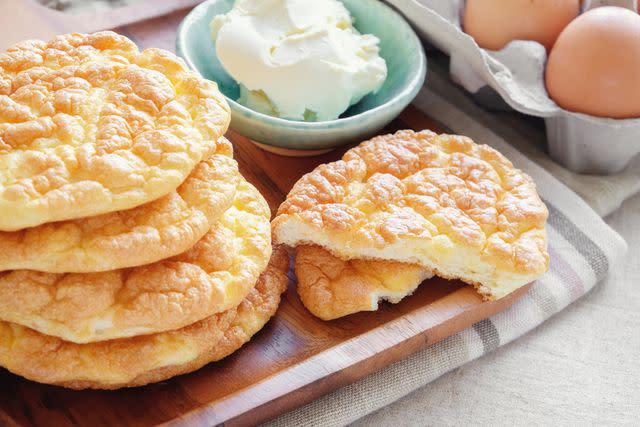
SewcreamStudio / Getty Images
Cloud bread is a ketogenic diet-friendly bread alternative that’s made from high-fat and high-protein ingredients like eggs and cream cheese or Greek yogurt.
It also contains spices and cream of tartar, which gives the ‘bread’ its signature airy texture. Some recipes also include a small amount of sugar.
If you’re watching your carbohydrate intake or looking for a gluten-free homemade bread option, cloud bread fits the bill. It’s low in carbohydrates and provides slightly more protein than a standard slice of bread, with about 3 grams of carbs and 5 grams of protein per serving, depending on the recipe you use.
While cloud bread is best used as a stand-in for a hamburger bun, don’t expect it to pass for the real thing: its soft texture likely won't hold up as well as the real deal.
Corn Tortillas
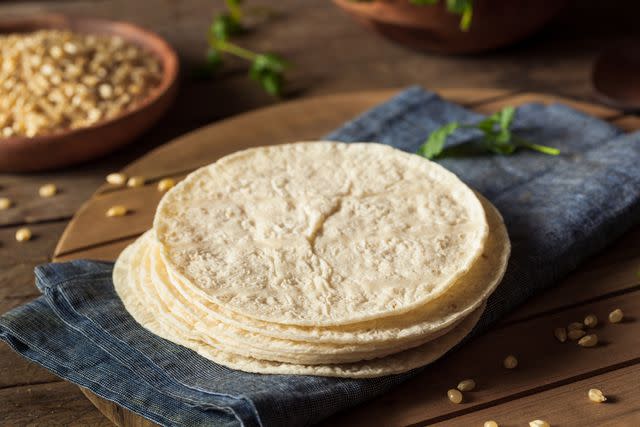
bhofack2 / Getty Images
Traditional corn products like corn tortillas and corn chips are great options for people with celiac disease or gluten sensitivities since corn is naturally gluten-free.
However, it’s important to read labels and check for other ingredients, as some corn tortillas are made from corn and wheat flour. That said, some store-bought tortillas are made from just a few simple ingredients, like ground corn, lime juice, salt, and water.
Starchy in flavor and grainy in texture, corn tortillas are the perfect vehicle for meals like homemade tacos and quesadillas.
Crepes
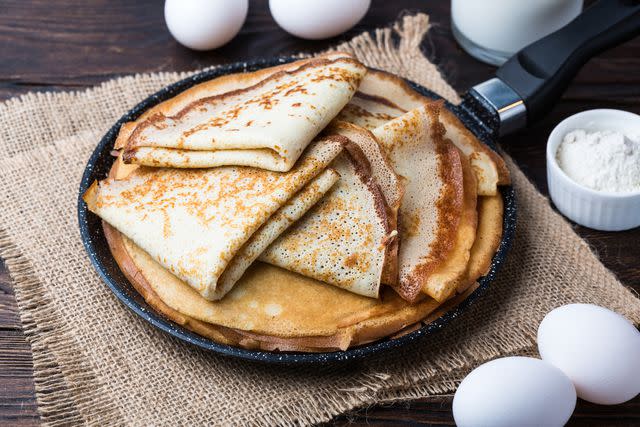
Yulia Naumenko / Getty Images
Combine eggs with your flour of choice, butter, milk, and water to make tasty crepes. If you’re following a gluten-free diet, use buckwheat flour (which is not made from wheat) when cooking your crepes.
The texture may be less delicate and silky than your classic crepe, but the buckwheat flour is a good source of fiber and protein, while eggs are low in carbohydrates and high in key nutrients like protein, choline, and vitamin D.
Sweet Potato
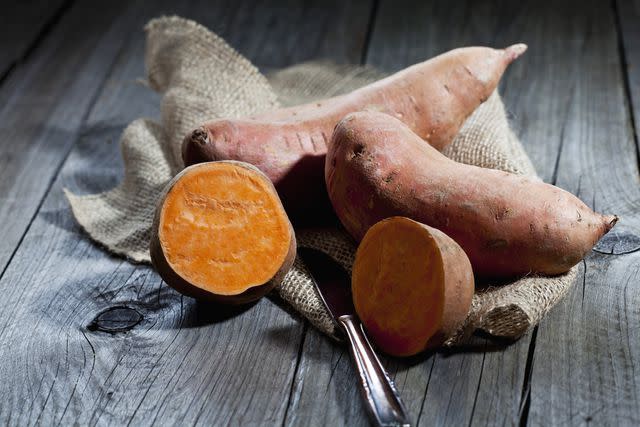
Westend61 / Getty Images
If gluten-free bread isn’t doing it for you, try swapping in sweet potato ‘toast’ instead.’ Thinly sliced slabs of cooked sweet potato are a grain-free alternative to traditional bread that are minimally processed and full of nutrition.
Sweet potatoes deliver energizing complex carbohydrates along with dietary fiber, which supports healthy blood sugar and cholesterol levels, and the antioxidant beta-carotene. Antioxidants help scavenge molecules that cause cell and tissue damage in the body and may therefore protect against chronic diseases.
Try baking sweet potato "toasts" until they’re creamy on the inside and golden on the outside, then pile them high with any toppings you’d like. Go savory with smashed avocado, microgreens, and olive oil, or keep it sweet with natural peanut butter, sliced strawberries, and a dash of cinnamon.
Lettuce Wraps and Buns
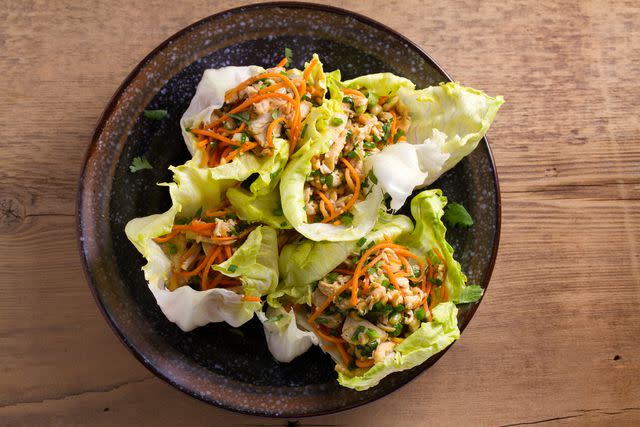
freeskyline / Getty Images
Leafy greens like collards and lettuce can't quite compare to a crusty slice of sourdough, but they can serve as containers for classic sandwich or wrap fillings.
Try lightly blanching collard greens so they’re just soft enough to serve as a low-carb wrap. The wrap will be delicate, so avoid overstuffing it to avoid ripping. Collard greens are an excellent source of vitamin K. Just 1/2 cup of boiled collards delivers more than 400% of your vitamin K needs for the entire day.
Sturdy greens like romaine and cruciferous vegetables like cabbage can also be used as low-carb lettuce cups or burger "buns."
Cauliflower Crust
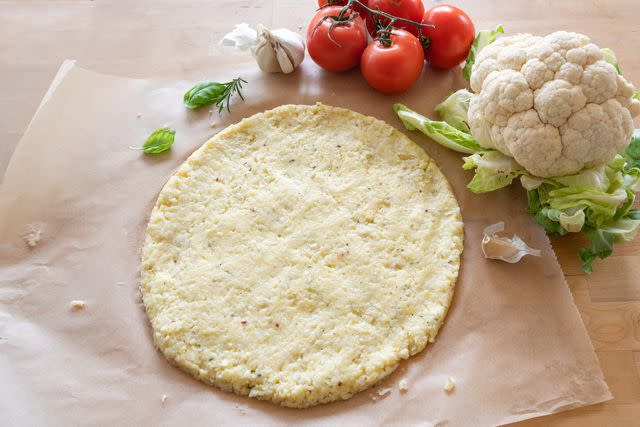
fermate / Getty Images
While the cruciferous vegetable will never provide the same chewy bite as standard pizza dough, cauliflower can be a helpful stand-in for those in need of a gluten- or wheat-free pizza.
Cauliflower pizza crust tends to be more moist, flat, and spongy in texture compared to classic pizza dough made from flour.
Cauliflower contains dietary fiber, immune-supportive vitamin C, and minerals like potassium. Pizza crust made from cauliflower isn’t necessarily heart healthier or lower in calories compared to standard pizza crust because it’s often mixed with ingredients like cheese and eggs to bind it together. Opt for produces with healthy ingredients.
Rice Paper
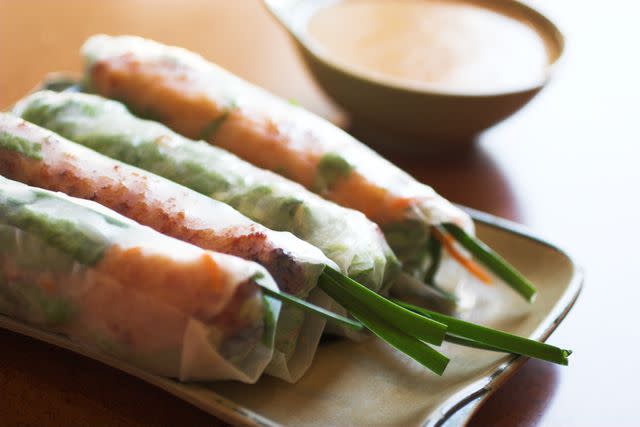
Rick Poon / Getty Images
Rice paper isn’t an identical substitute for sliced bread but it can be used as an alternative to wheat-based wraps.
Use the naturally gluten-free ingredient to make homemade summer rolls filled with traditional ingredients like shrimp or tofu, vermicelli noodles, herbs, and thinly sliced vegetables, or get creative with your own desired fillings.
Rice paper is mild in flavor and slightly sticky in texture once it’s hydrated (rice paper sheets are first briefly dipped in warm water to make them softer before being used to make summer rolls).
Rice paper can be delicate, so avoid overstuffing your wraps or rolls to prevent them from tearing.
Seaweed
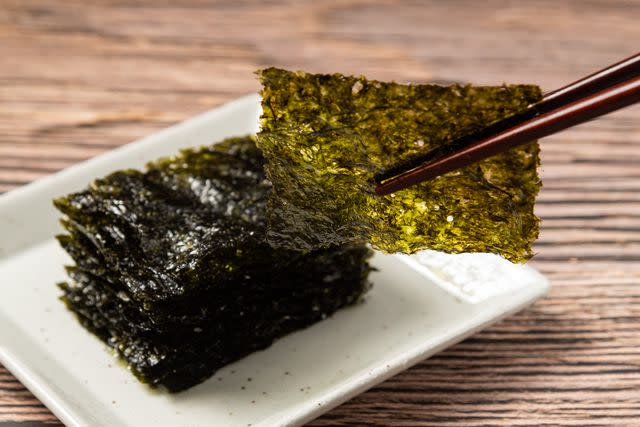
hiroyuki nakai / Getty Images
Seaweed is a great source of iodine, a mineral that’s required for the formation of thyroid hormones. Nori, a type of dried seaweed, may also contain small amounts of vitamin B12, a nutrient that’s typically only found in animal-based foods like meat, fish, dairy, and poultry.
Seaweed is savory and slightly salty in flavor. When dried, seaweed has a crisp, flaky texture. Nori can be pressed into large sheets and used as a gluten-free replacement to wheat-based wraps.
Fill large nori sheets with ingredients like white rice, cucumbers, sliced avocado, tuna, and kimchi for a balanced lunch that’s also great for your gut health.
Almond Flour
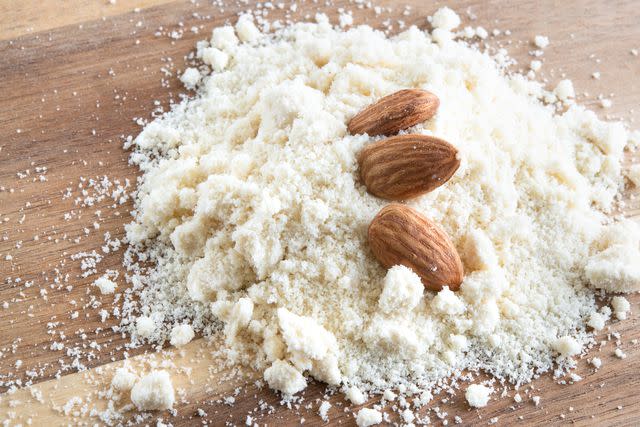
Roberto Machado Noa / Getty Images
Almond flour, which is made from blanched and ground almonds, is a helpful swap for gluten- and grain-free baked goods like quick breads, cakes, and muffins.
Almond flour is significantly lower in carbohydrates and higher in fat compared to white flour. However, the primary fats found in almonds–called monounsaturated fats–are heart healthy thanks to their ability to help lower LDL cholesterol levels in the blood.
Almonds and almond flour are also excellent sources of vitamin E, an important antioxidant in the body.
Try using almond flour in recipes for gluten-free breads or baked goods for a nutty flavor profile and rich, moist texture.
Related: The 6 Healthiest Flours for Every Use
Brown Rice Cakes
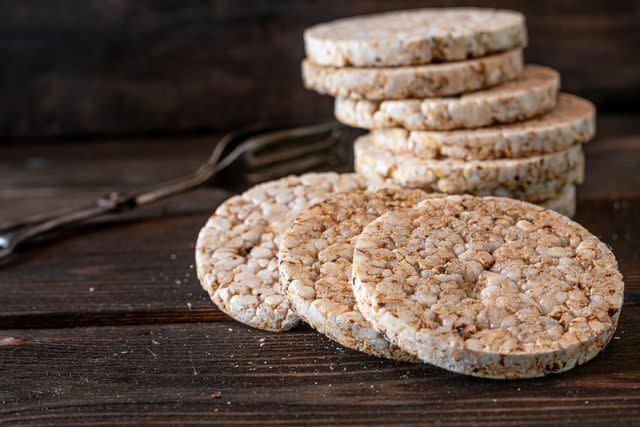
Angelika Heine / Getty Images
Brown rice cakes are a simple swap for a slice of toast at snack time and their mild flavor makes them a good vehicle for versatile toppings. They're low in calories, carbohydrates, sugar, and sodium.
Add hummus and fresh sliced turkey or almond butter and mashed raspberries to a crunchy brown rice cake for a balanced snack that’s ready in minutes.
Who Can Benefit From Bread Alternatives?
It’s not necessary to avoid bread solely for the sake of health. Carbohydrates—especially high-fiber carbs like whole wheat bread—can be part of a nutritious diet, even if your goal is sustainable weight loss or blood sugar management for prediabetes or type 2 diabetes.
When it comes to eating carbohydrates with diabetes, the key is to focus on quantity (i.e. how many carbohydrates you’re eating in one sitting or throughout the day) and quality. For example, a donut will likely raise your blood sugar levels more than a slice of whole wheat bread topped with eggs, cottage cheese, and avocado.
That said, some people may be required to avoid traditional wheat bread for medical reasons or find that they feel better when they limit bread. This can include individuals diagnosed with:
Celiac disease
Non-celiac gluten sensitivity
Wheat allergy
Wheat intolerance, as is seen in certain people with irritable bowel syndrome (IBS)
A Quick Review
Carbohydrates can be part of a healthy diet, even if you are trying to manage your weight or conditions like type 2 diabetes.
Emphasize minimally processed carbohydrate sources, like fruits, vegetables, legumes, and whole wheat breads, which provide vitamins, minerals, and dietary fiber.
If you’ve been diagnosed with celiac disease, gluten sensitivity, wheat allergy, or wheat intolerance, consider incorporating nourishing alternatives like baked goods made from almond flour, lettuce cups, seaweed wraps, and sweet potatoes instead.
For more Health.com news, make sure to sign up for our newsletter!
Read the original article on Health.com.

